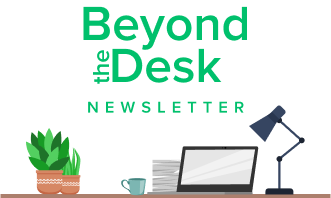Building a Culture of Diversity, Equity and Inclusion (DEI) in the Workplace
How to turn intent into action and build truly meaningful change instead of hollow commitments to DEI
by Britt Schoenhoff, Consulting Writer at PartnerComm, Inc. - July 6th, 2021
In the wake of increasing social unrest in 2020, many companies have ramped up their emphasis on DEI, recognizing the need to ensure an inclusive and equitable workplace for all employees. But how do organizations turn intent into action and build truly meaningful change instead of hollow commitments to DEI?
To move beyond DEI as a buzzword, companies need to understand why DEI matters to their business and what actions they can take to build a diverse, equitable and inclusive culture that will last.
Why Is DEI Important?
A diverse, equitable and inclusive culture is linked to greater productivity, innovation, employee engagement and retention—not to mention a positive reputation among potential consumers and clients. An environment where employees feel they can’t speak up and bring their true selves to work breeds dissatisfaction and low morale. Worse, a workplace where employees fear discrimination and worry about being subject to racist behavior leads to absenteeism, jeopardizing the employee’s performance and feeling of psychological safety. (See SHRM article “The Cost of Racial Injustice” for details.)
Embed DEI in Your Business
Building a DEI culture is both a moral and business imperative. But how can your organization create lasting growth and change in this area? You can’t just look at diversity targets—hiring a diverse workforce doesn’t necessarily lead to more inclusivity. It’s where you should start, but don’t focus solely on the pipeline. Think about your employees’ collective experience and work on everyone owning the workplace culture. Everyone needs to be invested in making the culture better, which will foster a greater feeling of belonging.
Another aspect of creating a DEI-driven culture is embedding DEI in all areas of the business. Recognizing employees’ contributions to DEI and incorporating them into the company’s larger business strategy will help drive change. This needs to happen at all levels of the organization.
Invest in Improving Your Culture
So you know why DEI is important and that you need to build a diverse, equitable and inclusive culture—but how do you do it? Here are some best practices you can follow to build and promote DEI at your organization.
Listen to all voices. One of the cornerstones of an inclusive environment is trust. But trust has to be earned. Leaders need to be vulnerable and share their own stories of where they can improve, and invite others to talk about their experiences and what they expect and want in the company’s culture. By modeling empathy and vulnerability, leaders show that they welcome open dialogue and different perspectives.
Examine the company’s policies and procedures. Do the company’s policies and procedures allow all employees to contribute in a meaningful way? Do they provide conditions where all employees can thrive? Think about the systems in place for compensating and educating employees, for example, or accommodating their personal needs (for example, through flexible work schedules).
Consider the company’s dress codes. Do they take into account gender, religion and disabilities? Creating an inclusive dress code may not be top of mind but it can help make the work environment more comfortable and feel safe.
Look for blind spots in your recruiting and hiring practices. Start with your job descriptions. Is the language biased? In 2015, the company Buffer discovered that less than 2% of applicants for developer positions were women—likely due to the call for “hackers,” a male-coded word. Gender-coded job descriptions tend to exclude certain applicants regardless of their qualifications.
Identify unconscious bias in talent management. Do all employees have access to the same opportunities and growth? Leaders often offer opportunities to people like them—and those that are different may not have the same access to development resources, mentoring and stretch assignments. Don’t make assumptions about an employee’s current skills and future potential.
Execute Your DEI Strategy Through Communications
As you work on implementing strategies to build a DEI-driven culture, remember that internal communications can help you engage leaders and educate employees, fostering a greater sense of belonging. Here are a few ways comms can get DEI off the ground:
Include DEI goals and commitments in onboarding communications. Use onboarding materials to highlight diversity groups, programs and initiatives, such as Employee Resource Groups (ERGs) and mentoring opportunities.
Provide managers with tools and resources. Employees often look to managers for advice. Equip managers with a “DEI toolkit” featuring key messages and FAQs so they feel more comfortable having open conversations with their direct reports about DEI-related issues.
Use internal channels to amplify employee voices. Forums that allow employees to share their stories can spark conversations and create connections. Employees can learn from their coworkers who model desired behaviors.
Create DEI style guides and content guidelines. Give these resources to leaders, managers and communicators to use when developing internal content. Share best practices for using inclusive language (and avoiding insensitive language and phrases), incorporating gender neutrality and promoting conscious inclusion in content.
Communicate progress and actions taken. Share the progress you’ve made on DEI commitments and next steps.
DEI initiatives often fail despite good intentions. Building a diverse, equitable and inclusive culture requires resilience, dedication, curiosity and empathy. By seeking out underrepresented stories and perspectives and celebrating unique experiences, companies can create a strong sense of belonging among its communities.
Author Bio: Britt is a Consulting Writer at PartnerComm, Inc., who has over 15 years’ experience as a communication and training specialist. She helps clients in all areas of employee communication, developing and executing strategies to support their business objectives. She leads projects ranging from benefits communication to healthcare marketing to website development.

Subscribe to Beyond The Desk to get insights, important dates, and a healthy dose of HR fun straight to your inbox.
Subscribe hereRecommended Posts
Search...
Product
GoCo
Resources
Articles
eBooks
Webinars
Customer Stories

![How to Create a DEI Policy for Your Workplace [+Template]](/img/containers/assets/goco/featured_images/posts/How-to-Create-a-DEI-Policy-for-Your-Workplace.png/125e3ac2dc478f46394ebc399b36bf25.png)

